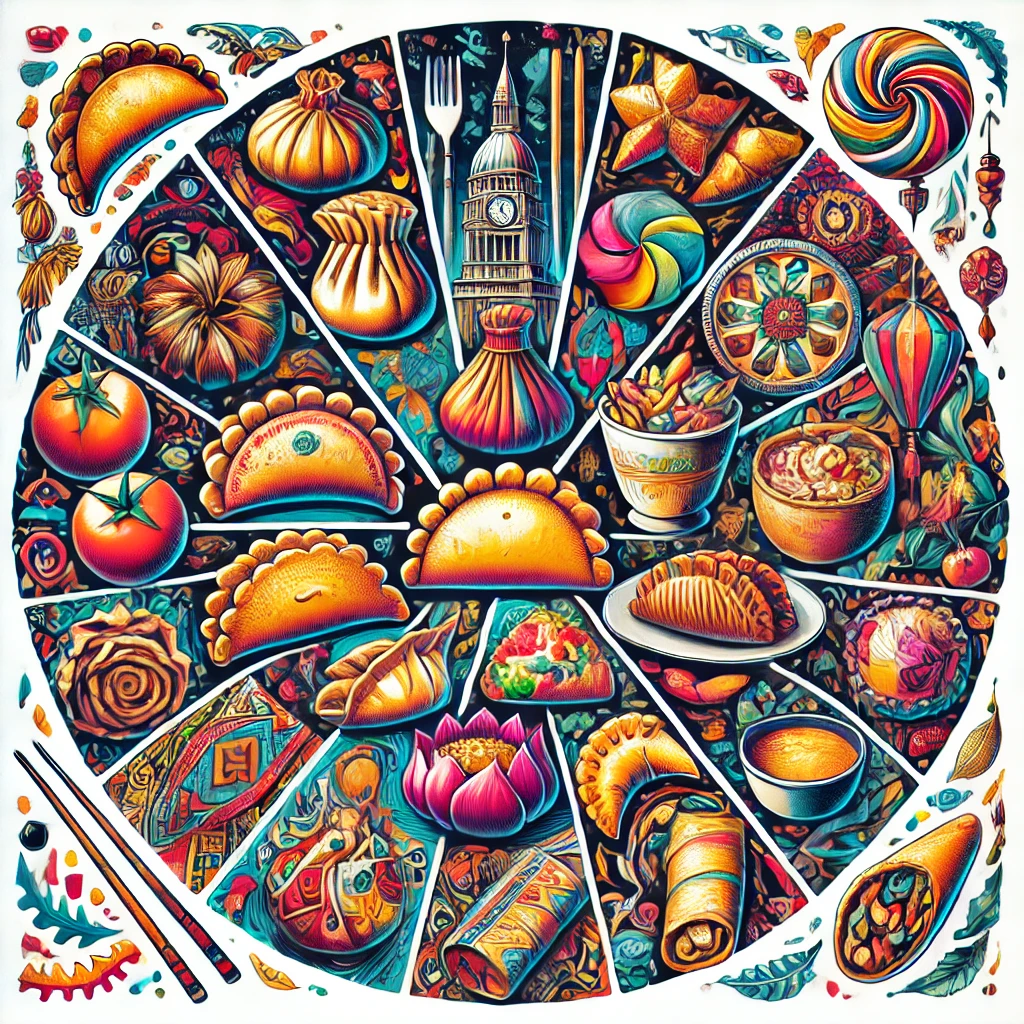Explore the rich history and cultural significance of pocket foods from around the world. From ancient Chinese dumplings and Indian samosas to Mexican tamales and Polish pierogi, these portable snacks have evolved through centuries, reflecting the ingenuity and culinary traditions of diverse cultures. Discover how these delicious treats have become global favorites, and learn about iconic restaurants and festivals celebrating these beloved foods. Dive into the fascinating stories behind calzones, empanadas, pasties, stuffed cabbage rolls, and egg rolls, and savor the flavors of history with every bite.
How Food and Beverage Companies Save Money by Tricking Consumers
Ah, the food and beverage industry – where creativity knows no bounds, especially when tricking consumers. In a relentless quest to maximize profits while keeping costs down, these companies have mastered the art of deception. One popular sleight of hand is “shrinkflation,” where products magically get smaller while prices stay the same or even increase. Yes, it’s an illusion Houdini would be proud of! Let’s dive into how these culinary conjurers pull the wool over our eyes, with specific examples showing how deep the rabbit hole goes.
Shrinkflation: The Magical Disappearing Act
Shrinkflation is the industry’s favorite party trick – reducing the size or quantity of a product while keeping the price unchanged. It’s like watching a magician pull a rabbit out of a hat, except the rabbit is smaller, and the hat is the same size. Here are some prime examples:
- Candy Bars:
- Snickers: Remember when a Snickers bar was a meal replacement? Thanks to Mars Inc., it’s more of a light snack. What was once a 2-ounce bar is now a svelte 1.86 ounces. The wrapper looks the same, so it’s practically the same thing, right?
- Cadbury Dairy Milk: Across the pond, Cadbury has shrunk its Dairy Milk bar from 200 grams to 180 grams. The packaging stayed the same, so your chocolate fix is the only thing that’s gone on a diet.
- Chips and Snacks:
- Frito-Lay’s Doritos: Once upon a time, a bag of Doritos was 9.75 ounces of cheesy goodness. Now, it’s a mere 9.25 ounces. But who’s counting? Certainly not Frito-Lay.
- Lay’s Potato Chips: Lay’s has taken its family-size bags on a weight-loss journey from 16 ounces to 13.5 ounces. Don’t worry; they’re still family-size if your family has shrunk too.
- Cereals:
- General Mills’ Cheerios: The classic yellow box of Cheerios used to weigh 19.3 ounces. Now, it weighs 18 ounces. The box looks identical, so let’s pretend it’s just as filling.
- Kellogg’s Special K: This “special” cereal has seen its box shrink from 19.5 ounces to 18 ounces. The price? Oh, that stayed special, too.
Packaging Tricks: The Shell Game
Another favorite ploy is keeping the packaging size the same while reducing the product inside. It’s like finding out the beautifully wrapped gift is mostly tissue paper. Here are some examples of this grand illusion:
- Ice Cream:
- Häagen-Dazs: That iconic pint of Häagen-Dazs used to be 16 ounces of creamy delight. Now, it’s only 14 ounces, but the container? Identical. Because why mess with perfection?
- Ben & Jerry’s: Similarly, Ben & Jerry’s has trimmed its pints from 16 to 14 ounces. The carton remains the same, ensuring your disappointment comes with a familiar face.
- Peanut Butter:
- Skippy Peanut Butter: Skippy cleverly altered the shape of its jars. They appear the same, but the peanut butter went from 18 ounces to 16.3 ounces. Optical illusion or clever deception? You decide.
- Coffee:
- Folgers: Folgers coffee cans once held 39 ounces of your morning brew. Now, it’s 30.5 ounces. The can’s size is virtually unchanged, just like your caffeine dependency.
Ingredient Substitutions: The Great Swaparoo
Why stick to high-quality ingredients when cheaper ones will do? This tactic saves money but leaves you with a subpar product. Here are some prime swaps:
- Chocolate Products:
- Hershey’s Kisses: Hershey’s has swapped out cocoa butter for cheaper vegetable oils in its Kisses. The result? Chocolate that’s a bit less kissable.
- Cadbury Creme Eggs: In the UK, Cadbury swapped Dairy Milk chocolate for a cheaper cocoa mix in its Creme Eggs. The backlash was egg-splosive, to say the least.
- Juices:
- Tropicana: Tropicana has been diluting its orange juice with more water and flavoring. Less fruit means more filler. It’s healthy food, right?
- Minute Maid: Minute Maid’s switch to high fructose corn syrup sweeteners is a sweet deal for them, but not so much for your health.
- Frozen Meals:
- Lean Cuisine: Lean Cuisine’s meals have traded fresh ingredients for processed alternatives, making your diet plan that much more depressing.
- Marie Callender’s: Conagra Brands has downgraded the meats and veggies in Marie Callender’s meals, ensuring your comfort food is comfortably mediocre.
Deceptive Labeling and Marketing: Smoke and Mirrors
Sometimes, it’s all about the fine print. Companies use misleading serving sizes, exaggerated health claims, or ambiguous ingredient lists to make you think you’re getting more than you are. Here’s how:
- Serving Sizes:
- Pringles: Pringles lists a serving size as about 16 chips. Sure, because we all stop at 16, right? It’s like they don’t know us at all.
- Ben & Jerry’s: Ben & Jerry’s claims a serving is 1/2 cup. Given their pints contain four servings, reality begs to differ.
- Health Claims:
- Vitaminwater: Coca-Cola markets Vitaminwater as a healthy drink, but with all that sugar, it’s candy in a bottle. Cheers to your health!
- Nutri-Grain Bars: Nutri-Grain Bars are marketed as nutritious, but they’re more like breakfast candy bars with all that sugar and refined flour.
- Ambiguous Ingredient Lists:
- Nature Valley Granola Bars: Nature Valley bars list various forms of sugar, like high fructose corn syrup and brown sugar syrup. Granola? More like gran-LOL-a.
- Fruit Snacks: Brands like Welch’s list fruit juice concentrates, which sounds healthy until you realize they’re just as sugary as candy.
Hidden Price Increases: The Invisible Hand
Sometimes, companies keep the product size and ingredients the same but sneak in price increases. Here’s how they perform this stealthy heist:
- Multipacks:
- Coca-Cola: Coca-Cola reduced the number of cans in some multipacks from 24 to 20 without a proportional price drop. It’s more like a multipack of disappointments.
- Pepsi: Some of PepsiCo’s multipacks went from 12 bottles to 10, charging you the same. Because who needs 12 when you can be equally dissatisfied with 10?
- Bundling:
- Toilet Paper: Charmin and Cottonelle bundle toilet paper rolls in larger packages but reduce sheets per roll. It’s like a roll of lies.
- Paper Towels: Bounty uses the same trick, making you pay more for less. Spill something? You’ll need more towels to wipe away your tears.
- Subscription Services:
- Meal Kits: Blue Apron and HelloFresh have subtly raised subscription prices, adding “premium” meal options at higher costs. Because what’s a subscription without a little surprise surcharge?
Conclusion
The food and beverage industry is a master of illusion, constantly finding new ways to trick consumers while maximizing profits. Shrinkflation, ingredient substitutions, deceptive labeling, and hidden price increases are just a few of their tricks. By staying informed and vigilant, we can see through these deceptions and make smarter choices.
As consumers, it’s crucial to pay attention to product sizes, ingredient lists, and pricing. Read labels carefully, compare unit prices, and be aware of packaging changes to ensure you get the best value. Let’s hold these companies accountable for their sleight of hand and demand greater transparency and honesty in the food and beverage industry. After all, we deserve more than just a good magic show.







